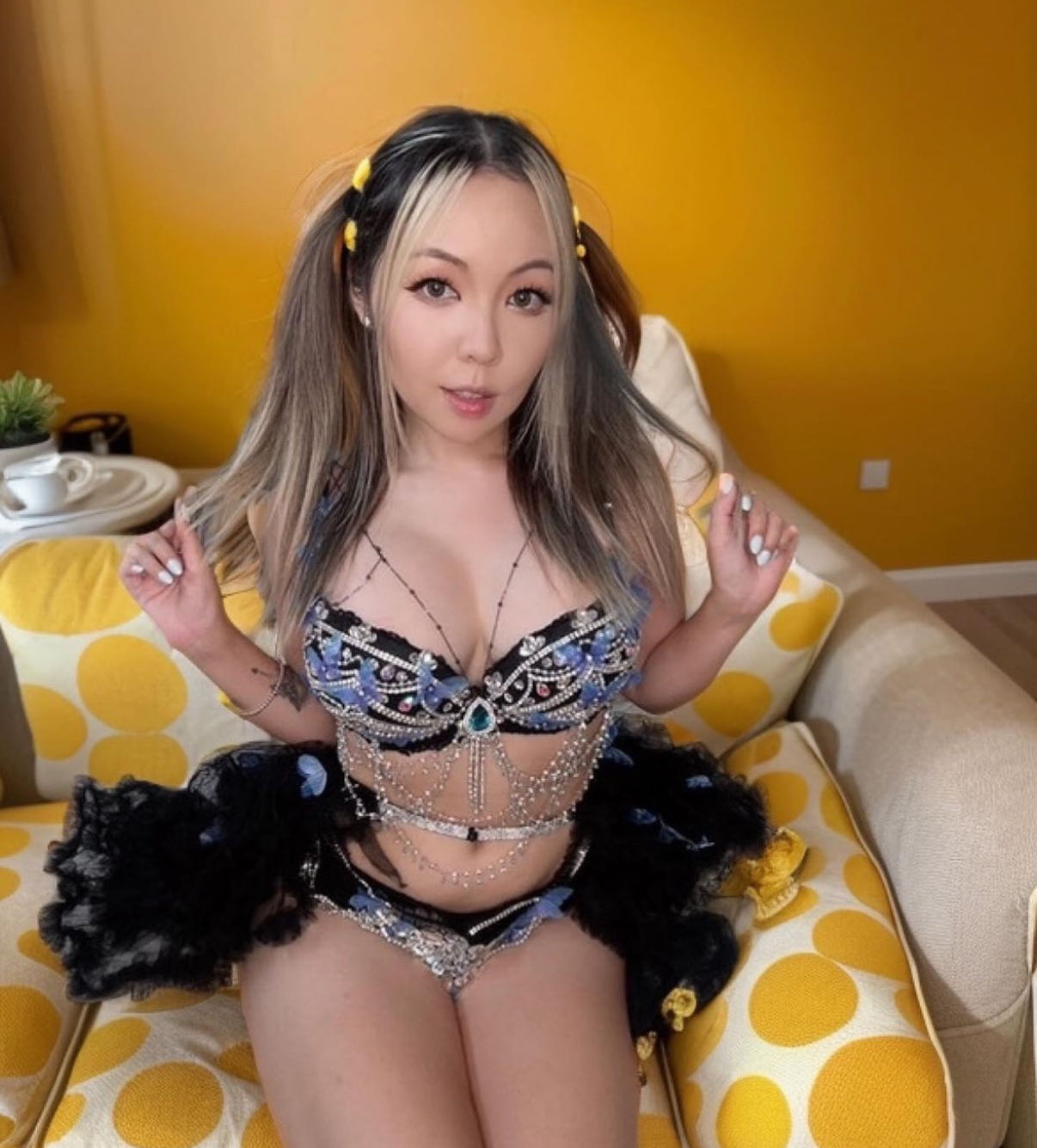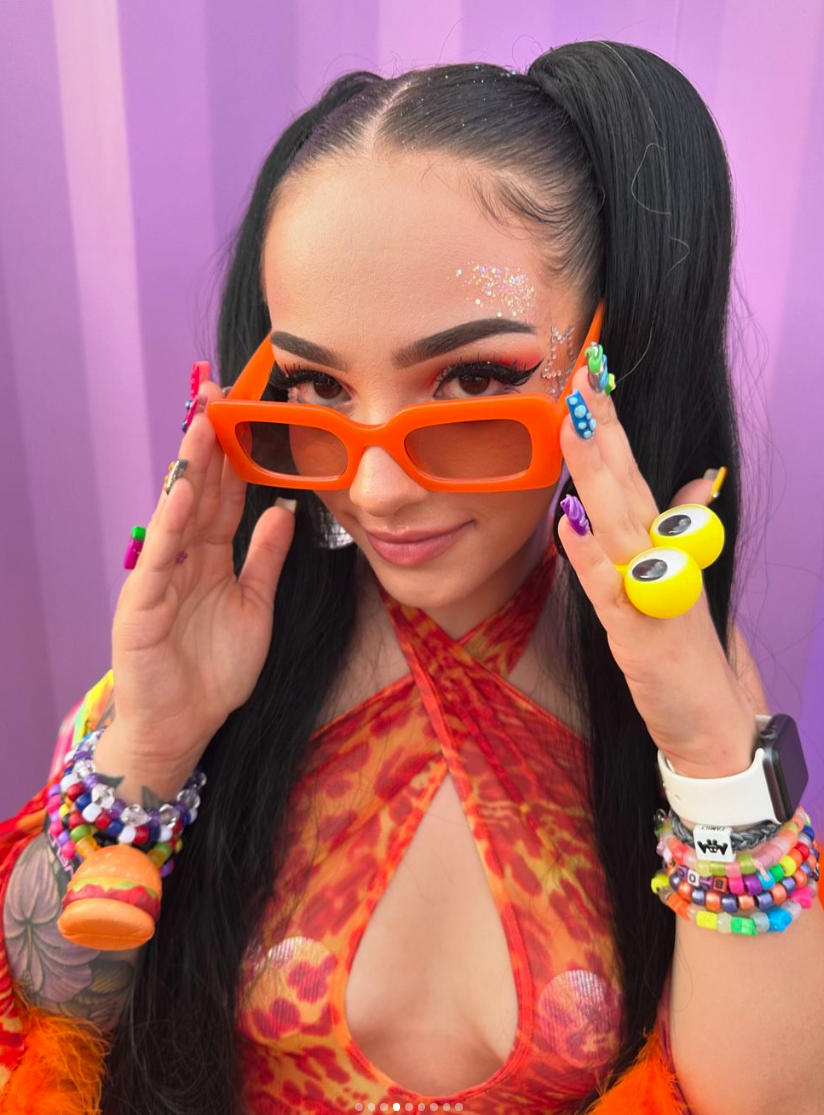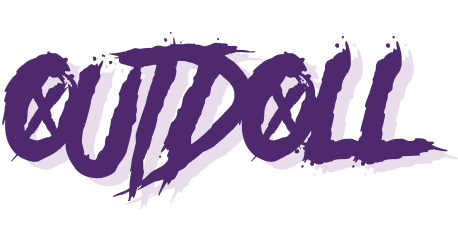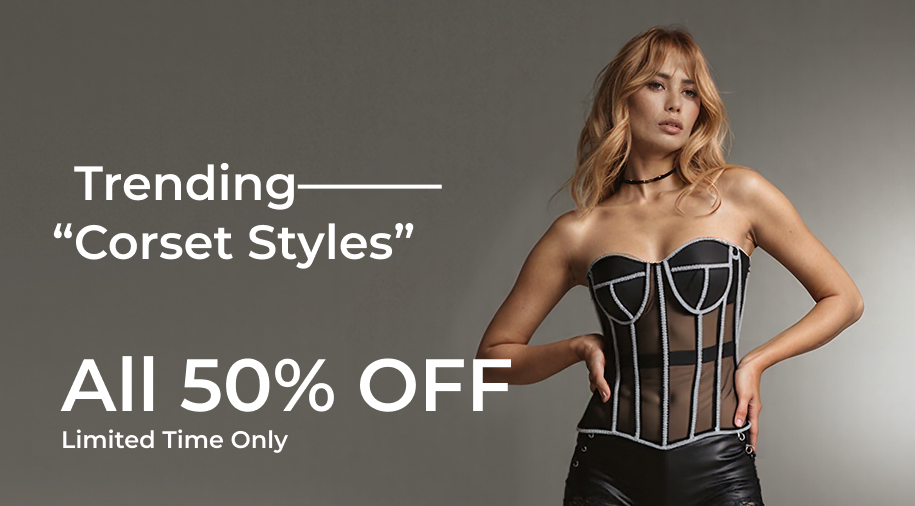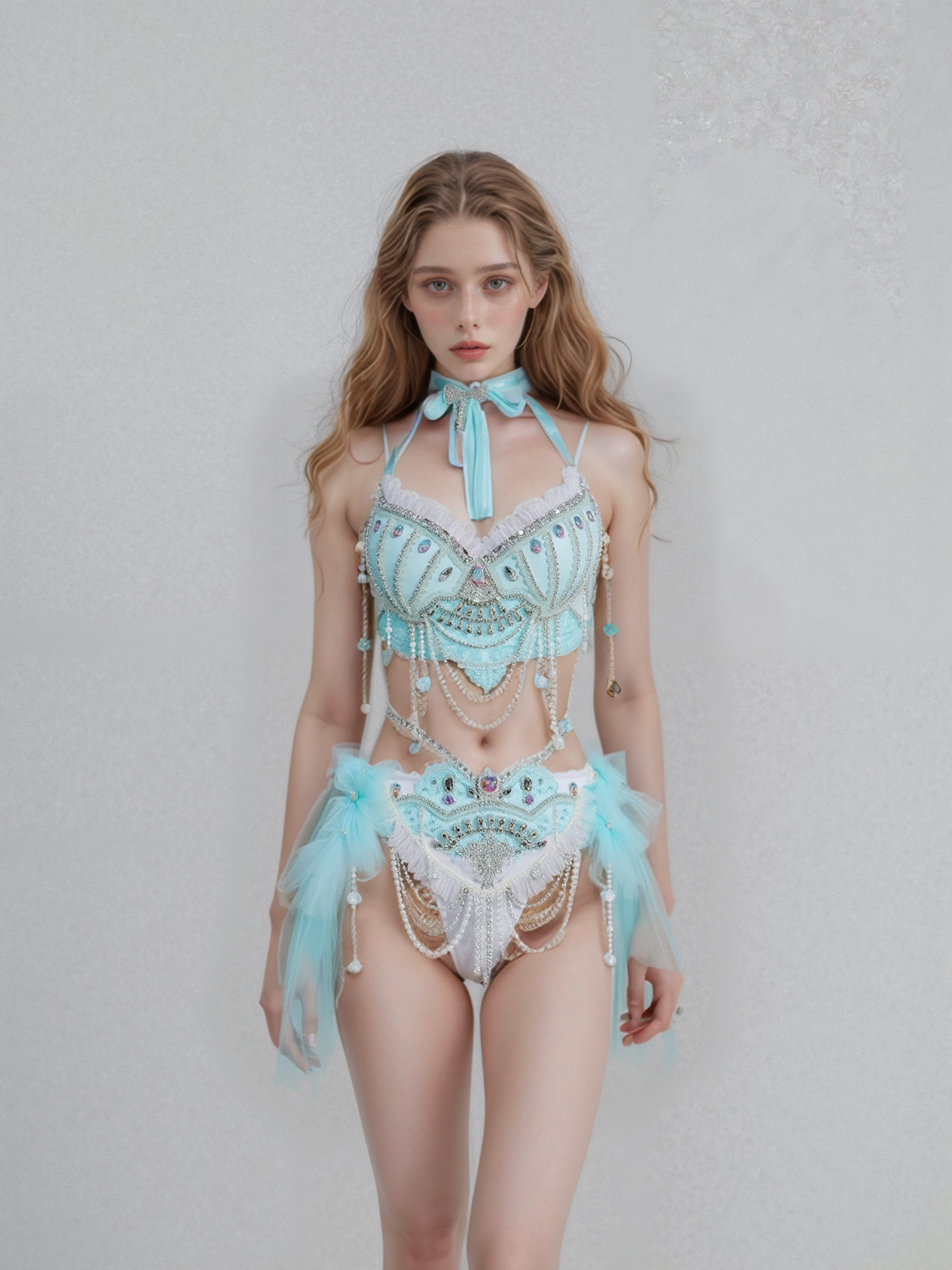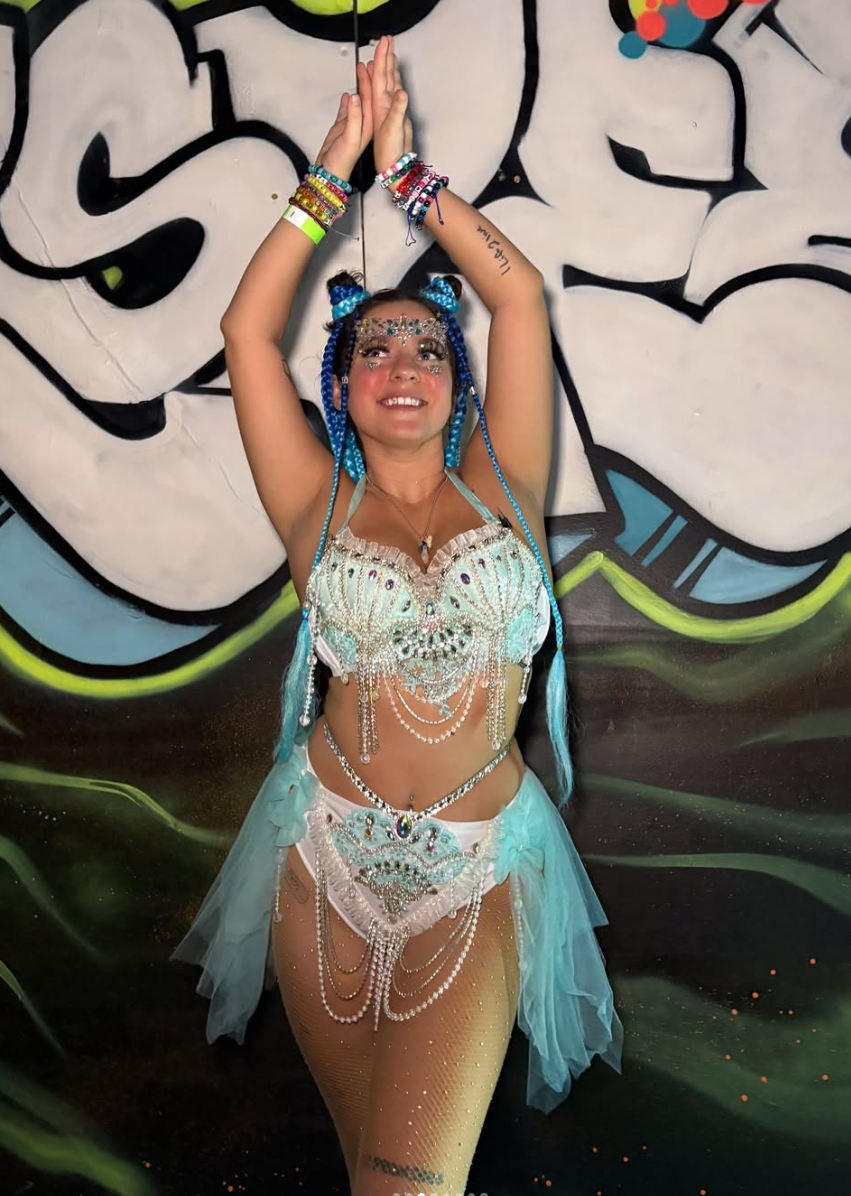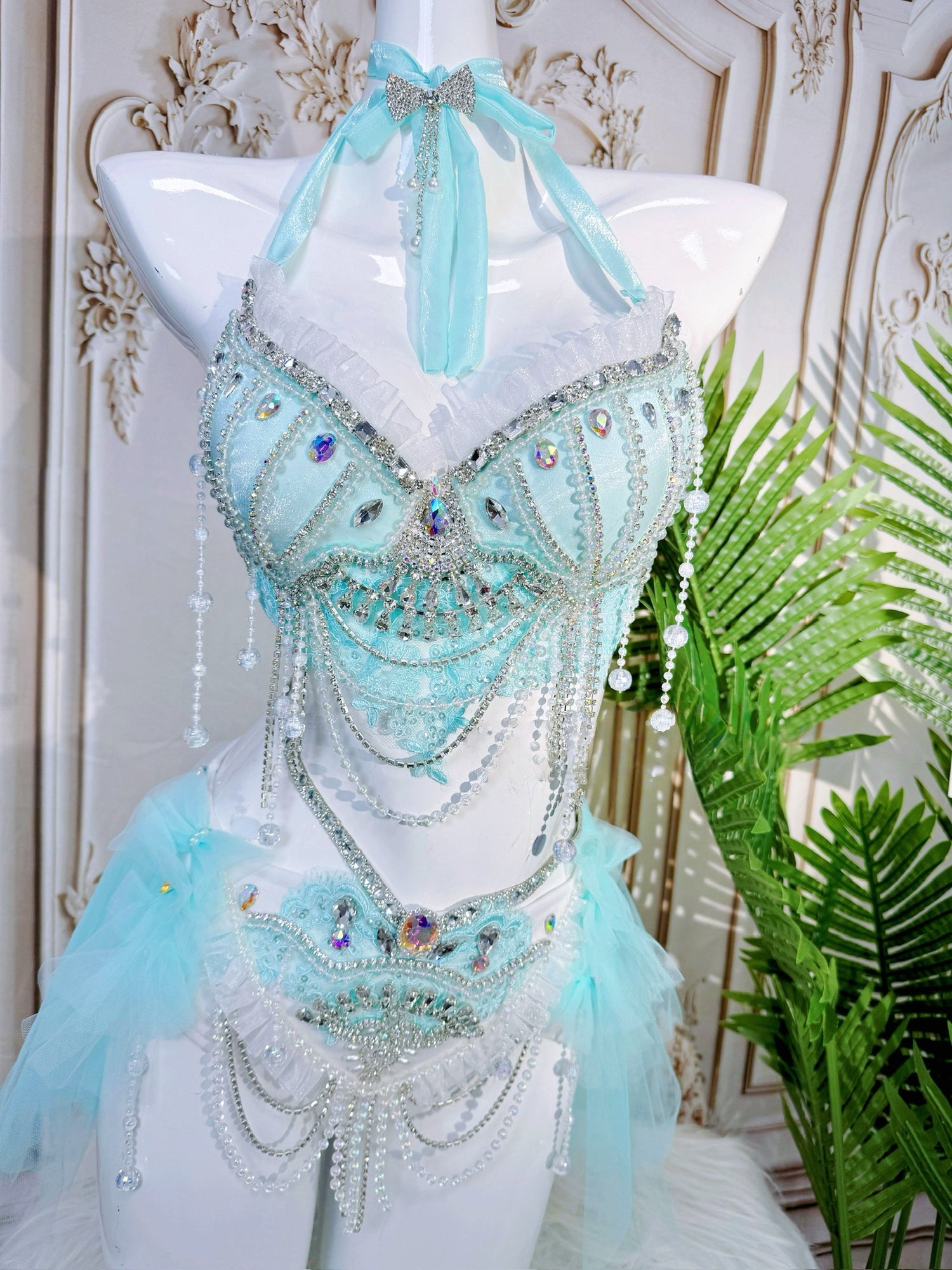Choosing the right rave outfit colours can feel harder than picking the festival itself. You want shades that look good in selfies, stand out in a packed crowd, and still feel like you when the bass drops. That’s exactly what this Rave Colour Guide is here to solve.Outdoll.com is a U.S.-based, original-design festivalwear brand creating rave outfits, corset sets, faux fur looks, and high-quality nipple pasties for confident, expressive women. Designed in-house and shipped from the U.S., Outdoll’s pieces are made for real festivals, real bodies, and real nights out not just studio shoots.In this guide, we’ll break down how rave colours work with stage lighting and blacklights, how to pick outfit colours for your skin tone and event type, and how to style neon rave outfits, glow-in-the-dark rave clothes, and metallic looks for 2025. You’ll also find styling ideas, quality tips, and direct paths to Outdoll collections so you can turn colour theory into a scroll-stopping EDM festival outfit.
1 – What Are Rave Colours in Festival Fashion?
Define rave colours clearly in fashion terms
In festival fashion, rave colours are high-impact shades and finishes designed to be seen from across the dance floor. They aren’t just “bright” they are neon, holographic, metallic, and UV-reactive tones that interact with lights, lasers, and cameras especially.A classic everyday outfit might rely on neutral tones and subtle accents. A look built from a rave colour guide leans unapologetically bold: hot pinks, electric greens, royal purples, silver metallics, and glow accents that look like they were born under a strobe.In EDM and ravewear, colour is a language. It says “soft fairy,” “cyber baddie,” “main-character energy,” or “dark techno queen” long before anyone hears your voice. Outdoll designs lean into that language, using intentional, in-house colour palettes to create rave outfit colours that tell a story from head to toe.
Where and how rave colours are typically worn
Rave colours show up wherever music, lights, and self-expression collide. You’ll see them in:
Raves & EDM festivals like EDC Las Vegas, Ultra, Electric Forest, and regional campouts, where neon and UV-reactive finishes turn into glowing clouds of colour at night.
Clubs & nightlife in cities like Miami, Vegas, and NYC, where darker rooms make metallics, sequins, and neon details the star of your outfit.
Festivals & day parties like Coachella, pool parties, and rooftop events, where pastel and fairy-core shades shimmer under sunlight before transitioning into nighttime glow.
How you wear rave colours depends on the setting:
Daytime: softer hues, iridescent and pastel gradients, reflective details that catch the sun.
Night/UV: vivid neon, white accents, and glow-in-the-dark rave clothes that light up under blacklights.
Outdoll’s pieces are built with these environments in mind, so your outfit doesn’t disappear into the background once the lights change.
Why rave colours are trending in 2025
In 2025, rave colours are less about fitting into a dress code and more about celebrating self-expression and body confidence. Several trends are driving their popularity:
Dopamine dressing: People are using colour psychology to feel happier and more energised, and bold rave outfit colours are perfect for that.
Social media & content: Outfits need to read well on camera. Neon rave outfits, metallic corsets, and holographic skirts photograph beautifully for Reels, TikToks, and festival photo dumps.
Inclusivity: There’s no “one type” of body or look at raves anymore. Curvy, petite, tall, plus-size, and mid-size bodies are all claiming bold shades with zero apologies.
Creative fashion movements: Fairy-core, cyber, Y2K, and futuristic styles all overlap in festival fashion, and each trend has its own colour language.
Outdoll keeps pace by designing collections that pair trending colours with flattering cuts, comfy fabrics, and flexible sizing—so you get the best of style and wearability.
2 – Key Design & Quality Details for Rave Colour Outfits
Materials and comfort for colour-rich ravewear
Rave colours only look as good as the fabric they’re printed or woven onto. The right material can make a colour look luminous; the wrong one can make it look flat or cheap. When you’re picking a colour-heavy EDM festival outfit, pay attention to:
Holographic vinyl or foil: Creates mirror-like finishes that catch every flash and laser. Best for statement pieces like corsets or mini skirts.
Soft stretch satin & spandex blends: Hold rich pigment while staying breathable and comfortable for hours of dancing. These are ideal for tops, bodysuits, and high-waisted bottoms.
Mesh and sheer fabrics: Allow layered colour play—like glitter nipple pasties under a tinted mesh top—without adding bulk or heat.
Faux fur in saturated shades: Adds cosy warmth and texture while still showing your chosen colour story. Outdoll’s faux fur sets are lined for comfort, so you get drama without itch.
Material quality also determines how long colours last. High-quality dyes and finishes are less likely to bleed, fade, or crack, even when you sweat or hand-wash your pieces. That’s why Outdoll prioritises material quality alongside style—your colour-rich ravewear should look good beyond one festival.
Fit, adjustability, and skin-friendliness in colourful pieces.
Bold colours draw the eye so fit is everything. When your neon corset, metallic skirt, or brightly colored faux fur hits your body in the right places, the whole outfit reads intentional and flattering.
Key details to look for:
Supportive cuts: Corsets and high-waisted bottoms help define your shape and give bright colours a structured canvas.
Adjustable straps & lace-up backs: These allow you to fine-tune the fit for your torso length, bust size, and comfort level. Outdoll corsets often use lacing and multiple hook levels to give you more control.
Stretch panels: Strategic stretch makes it easier for different body types to wear the same piece, especially in high-pigment fabrics, comfortably.
Skin-friendly adhesives: Nipple pasties are adhesive fashion accessories designed for both coverage and style. Outdoll’s colourful and glitter pasties use skin-friendly adhesives so you can wear bold hues close to your skin without irritation.
Because Outdoll designs with size flexibility in mind, even electric neon and saturated shades feel wearableyour clothes support you, instead of fighting your body.
Visual elements: holographic, sequins, metallics, neon glow
Colour isn’t just about hueit’s also about finish and texture. That’s where rave-specific visual elements come in:
Holographic: Shifts between colours as you move. Ideal for statement corsets, skirts, and accessories. Perfect for a futuristic or “space-babe” vibe.
Iridescent: Softer, pearly colour shifts that work beautifully in fairy-core and pastel rave outfit colours. Great for daytime festivals.
Metallic: Solid gold, silver, copper, or chrome-like finishes that feel powerful and luxe. Combine with bold reds or blacks for high drama.
Sequins & glitter: Provide dense sparkle; better for tops, bras, and accent panels rather than entire heavy pieces if you want to stay comfy.
Glow in the dark & UV-reactive details: Essential for glow in the dark rave clothes that transform under blacklight. Think glowing trims, prints, and accessories that turn your body into a moving light source.
If you’re nervous about going “too loud,” balance these elements with grounding tones:
Neon top + black base
Metallic corset + solid-colour bottoms
Holographic mini skirt + simple crop top
3 – How to Style Rave Colours for Different Events
Style Idea 1: Festival or outdoor rave outfit
Outdoor festivals demand a long-game colour strategy—your look needs to work in bright sun, golden hour, and night-stage lighting. Here’s how to use rave colours at all three:
Daytime (sunlight): Choose pastel and iridescent tones like lilac, soft pink, mint, and sky blue. These fairy-core gradients look dreamy in daylight and won’t feel too harsh in photos.
Sunset: Lean into warm shades—peach, lavender, rose gold—that glow as the light changes. Holographic accents start to catch more light as the sun drops.
Night: Let your accessories and details turn things up with neon and glow elements layered over your base.
Example EDM festival outfit:
Pastel iridescent corset
Matching mini skirt with holographic or glitter details
Fairy wings or tulle cape
Glitter nipple pasties under a lightly sheer top or cutout bodysuit
Comfortable platform boots or sneakers
Layer a pastel faux fur jacket or shrug for chilly nights. Add UV-reactive face gems or body paint to make your entire look come alive under festival lights. This is one of the easiest ways to turn rave outfit colours into a full fairy rave vibe.
Style Idea 2: Night-out or club look
Club settings are darker, more intimate, and often more polished than dusty festival fields so contrast is your best friend. For a night-out look, think sleek base with punchy accents:
Start with a black corset set or fitted mini dress as your canvas.
Add neon or metallic accents with accessories, belts, leg garters, or harnesses.
Use glow accessories or subtle glow-in-the-dark rave clothes elements that activate under UV lights at the bar or club.
Example club-fit colour recipe:
Black corset top with lace-up details
Black mini skirt or high-waisted shorts
Neon green, hot pink, or electric blue leg garters and a choker
Neon or metallic nipple pasties underneath if you’re playing with sheer or cutout panels
Colour-blocking works beautifully here: one main neon shade + black + maybe one metallic accent. This gives you a strong, wearable look that still feels like a neon rave outfit, especially in cities like Miami or Vegas, where club fashion is practically a sport.
Style Idea 3: Performance or photo shoot edition
If you’re a dancer, DJ, performer, or content creator, your colour choices have to work for both IRL and camera. High-saturation, high-contrast palettes help you stand out from LED screens, crowds, and stage setups.
Two powerful colour stories:
Red-and-gold power look:
Red corset with structured boning
Matching red bottoms, maybe with gold hardware or trim
Gold glitter nipple pasties under a peek of sheer fabric
Gold accessories and boots
Purple-and-silver futuristic look:
Metallic silver corset or top
Purple holographic mini skirt or shorts
Silver or holographic pasties and reflective accessories
For dynamic videos and shots:
Incorporate reflective or glow details along seams, straps, or edges so every movement is outlined in light.
Use glow-in-the-dark rave clothes strategically—like glowing straps or trims that trace your body as you spin or dance.
Colour is part of your branding as a performer. Picking a signature shade or combination and building multiple outfits around it is a smart way to make yourself instantly recognisable.
Tip – Creative layering with colour
Layering lets you experiment with bold shades without committing to a single extreme look. Try:
Pasties + sheer tops:
Wear glitter or neon nipple pasties under a sheer, colored mesh top to build depth and play with shape and coverage.
Neon corset over a darker base:
A neon corset layered over a black bodysuit or dress creates high contrast while still feeling secure.
Faux fur over metallic sets:
Throw a bright faux fur jacket over a metallic set for a rich, multi-textured colour story.
Colour capsule planning:
Pick:
One dark or neutral base (black, nude, deep plum)
One hero colour (neon green, hot pink, red, electric blue)
One accent (metallic or holographic)
With those pieces, you can create multiple rave outfit colours and combinations by swapping just one or two items each night.
4 – Why Buy Colourful Rave Outfits from Outdoll.com
– Exclusive in-house colour stories — not mass-produced
Outdoll isn’t pulling random colours from a factory catalogue. Every collection starts with in-house colour stories crafted specifically for festival and nightlife culture. Think:
Space-babe palettes with silvers, icy blues, and galaxies of holographic accents.
Fairy and pastel drops with soft pinks, lilacs, and iridescent greens.
Fire and red-themed capsules that lean into powerful, romantic, and high-energy looks.
Neon-focused edits are perfect for building a head-to-toe neon rave outfit.
Because the designs and colours are original, you’re far less likely to show up at an event wearing the same thing as everyone else. This is especially important when you’re curating a bold rave colour guide for your own personal style.
U.S. shipping = fast delivery + easy returns
When you’re planning an EDM festival outfit, timing can make or break the experience. Outdoll ships from U.S. locations, which means:
Faster standard shipping compared to overseas fast fashion.
Dependable express options for last-minute Coachella or EDC outfit emergencies.
Clear information on shipping windows, so you’re not guessing whether your neon corset will make it in time.
If your outfit colours aren’t quite what you envisioned—or you want a different size or shade the brand’s easy return and exchange approach makes it simple to pivot. That flexibility is critical when you’re experimenting with new colour combinations.
Quality-tested fabrics, prints, and finishes
Outdoll’s colour-rich designs go through testing to make sure they feel as good as they look. That includes:
Checking for colourfastness so bright hues don’t immediately fade or bleed when you sweat or gently wash them.
Making sure fabrics are soft against the skin, even when they’re metallic, holographic, or sequin-embellished.
Verifying that glow and UV-reactive finishes actually pop in festival and club settings, not just in studio lighting.
Bright shades can easily feel scratchy or cheap if the materials are wrong. Outdoll’s focus on both material quality and comfort makes it easier to say yes to daring colours, because you know the base garments are built for movement and long wear.
Customer favourites and size flexibility
Some colourways consistently become customer favourites—like neon pinks, black-and-neon combos, and powerful reds—and Outdoll designs take note. But those colours are offered in silhouettes that work across different shapes and sizes.
Size flexibility shows up in:
Stretch fabrics that hug curves without digging.
Lace-up backs and adjustable straps that let you tailor fit to your own body.
High-waisted cuts that support the midsection while still looking sleek.
Customer reviews and detailed product descriptions help you see how other people with similar body types styled their rave outfit colours, making it easier to imagine how a certain neon or metallic shade will work for you.
5 – Related & Complementary Colour Collections on Outdoll.com
Match your look with core colour-driven collections.
Once you understand rave outfit colours, you can shop Outdoll by vibes and palettes, not just individual items. Some key collections to explore:
Full Outfit Sets:
Pre-styled looks with coordinated tops and bottoms in specific colour themes—neon, pastel fairy, metallic glam, and more. Ideal if you want an EDM festival outfit ready to go.
orset Collection:
A range of corsets in black, red, holographic, pastel, and neon shades, designed to flatter your waist and upper body. These pieces anchor your colour story and can be reworn with multiple bottoms.
Faux Fur Sets:
Colourful faux fur jackets, shrugs, and accessories that instantly elevate a simple base. Throw a pink or purple faux fur over an all-black look to create instant rave drama.
Nipple Cover Pasties Collection:
Glitter, silk, glow-in-the-dark, and skin-toned pasties that either match your outfit colours or provide contrast. Nipple pasties are small, adhesive accessories that offer coverage, comfort, and style, especially under sheer or cutout pieces.
Each category is a building block in your personal rave colour guide. Mix and match within and across collections for new looks without starting your wardrobe from zero every time.
Pairing guides for rave colour ideas
Colour pairing doesn’t have to be scary. Start with a formula, then add your personality. Try:
Silk or skin-toned pasties + sheer colored corsets
Great if you love bolder corset shades but want more subtle coverage underneath.
Neon rave outfits + black faux fur for contrast
A neon green or pink set under a deep black faux fur creates an editorial, high-impact silhouette, especially for night events.
Metallic corset + holographic bottoms + solid accessories
— Let your two biggest pieces do the talking, and keep accessories in one solid shade to avoid colour chaos.
As a quick rule:
Pick one base (black, nude, or white).
Choose one hero colour (your main neon or bold shade).
Add one special effect (metallic, holographic, or glow).
That’s enough to create a cohesive look that reads intentional, not cluttered, while still leveraging the full impact of rave outfit colours.
Explore all colour-rich collections: [Internal link: Explore all collections on Outdoll.com]
6 – FAQs About Rave Colours in Outdoll Outfits
Q.1: What rave colours look best under blacklight and UV at EDM festivals?
The best rave colours under blacklight are bright neons and whites.
Neon yellows, greens, and pinks, plus pure white, tend to glow the hardest under UV lighting. When you combine these shades with glow-in-the-dark rave clothes or UV-reactive trims, your EDM festival outfit becomes a moving highlight reel on the dance floor.
Q.2: How do I choose rave outfit colours that flatter my skin tone?
Choose rave colours that either complement or intentionally contrast your undertone.
Warm undertones usually pop in golds, oranges, corals, and warm pinks; cool undertones often shine in blues, purples, silvers, and fuchsia. Neutral undertones can play with both sides. The easiest move is to try your usual “flattering” colours in bolder, brighter versions for ravewear.
Q.3: Can I mix neon and metallic in one rave outfit, or is that too much?
Yes, you can absolutely mix neon and metallic—as long as you use a simple formula.
Keep one neon as the star, one metallic piece as the supporting player, and ground everything with a neutral like black. For example: neon green top, silver corset or belt, and black bottoms create a powerful yet balanced look that still reads cohesive.
Q.4: Are Outdoll’s bright and neon pieces comfortable for all-night wear?
Yes, Outdoll designs bright and neon pieces with comfort and movement in mind.
Stretch fabrics, soft linings, and smart construction mean your rave outfit colours feel good against the skin instead of being scratchy or stiff. Adjustable straps and flexible fits help make neon rave outfits suitable for dancing, walking, and staying out through multiple sets.
Q.5: How do I wash and care for vibrant or glow-in-the-dark rave clothes?
Most vibrant and glow pieces should be treated gently to preserve their finish.
Spot clean when you can, hand-wash in cool water when needed, and avoid harsh detergents or high heat in the dryer. Always check individual care instructions, especially for glow-in-the-dark rave clothes, metallics, and holographic finishes, to keep your colours bright for future events.
Q.6: Does Outdoll ship colourful rave outfits across the U.S., and can I return if the colour isn’t right?
Yes, Outdoll ships across the United States and offers returns if something isn’t right.
Because everything ships from the U.S., you get faster delivery for last-minute EDM festival outfit planning. If a colour doesn’t match your expectation or you want a different shade or size, the return and exchange options make it easy to adjust before your event.
Conclusion / CTA
The right rave colours can completely change how you feel at a festival, rave, or club night. A good rave colour guide isn’t about rules—it’s about giving you tools to play with neon, metallic, holographic, and glow shades in a way that flatters your body and expresses your mood.
Outdoll’s in-house designs, high-quality materials, and U.S. shipping make it easier to experiment with rave outfit colours without worrying about cheap fabrics, unreliable delivery, or one-time-wear disasters. With corset sets, faux fur, full outfits, and creative nipple pasties, you can build a colour wardrobe that grows with your festival calendar.



